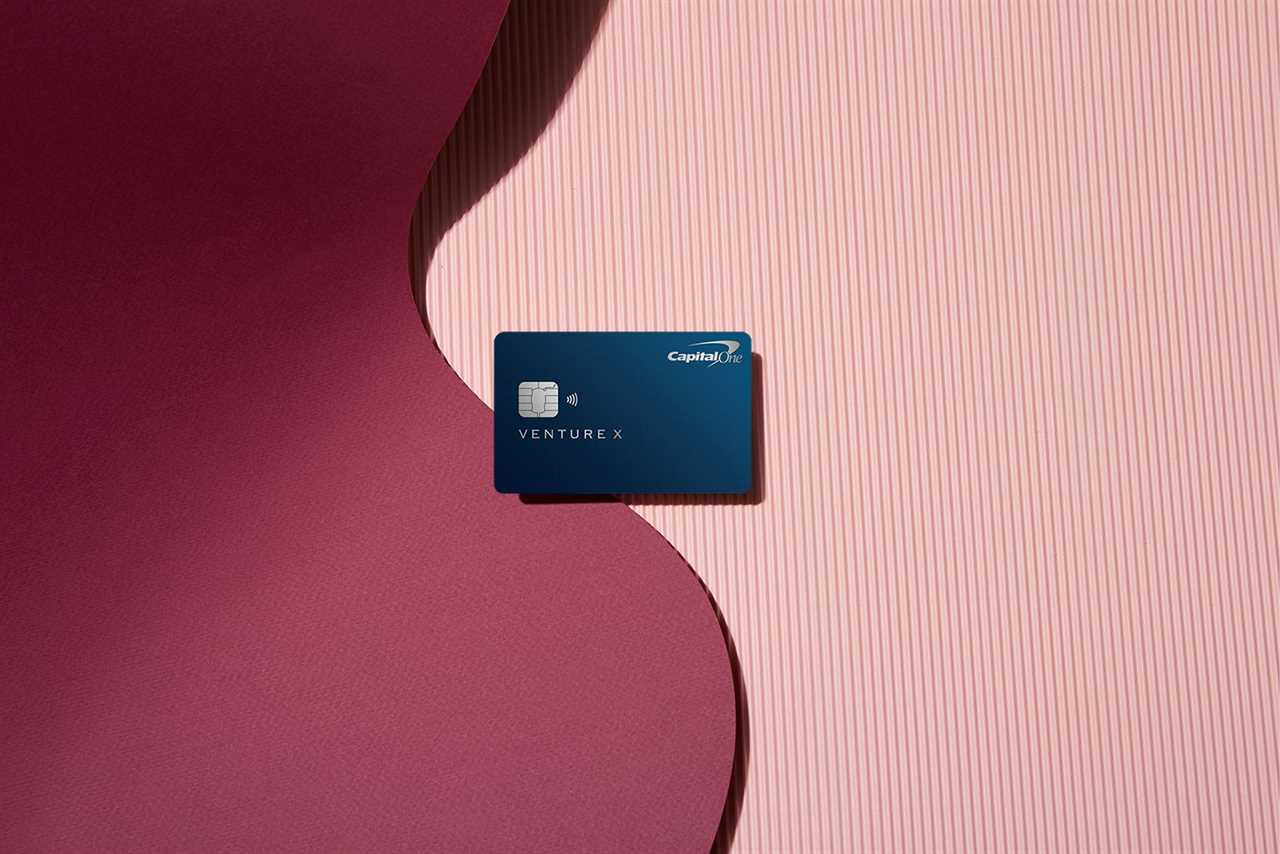HOSTED BY: 1 AIR TRAVEL
The last few years have been a roller coaster for both the travel industry and the market for rewards credit cards. As bleak as the landscape was in mid-2020, we’ve come a long way since then — though there have been some fits and starts along the way.
In looking back over the last few years, some notable trends jump out as card issuers tried to react to customer sentiment and stay relevant in a highly dynamic environment.
From shifting bonus categories to hefty welcome offers and an array of new product launches, here’s a look back at where we’ve been — and a possible glimpse at where the market is heading in 2023.
Sign-up for the TPG daily newsletter to get stories like this delivered to your inbox.In This Post
2020: Meet customers where they are
The first few months of the coronavirus pandemic brought most of the world to a screeching halt. Travel demand plummeted, and almost overnight, credit card issuers realized they needed to pivot. After all, enjoying airport lounge access or earning bonus points on airfare purchases was essentially worthless, as many travelers were grounded — with no real light at the end of the tunnel.

Lounge access as a credit card benefit became much less useful with the arrival of the pandemic. (Photo by Zach Griff/The Points Guy)
That’s why we saw things like:
Chase Pay Yourself Back: This program was put in place for cardholders to redeem points for groceries and takeout at a similar rate as travel purchases — and one TPG staffer used it to save nearly $5,000. It has since evolved to cover different purchases, but this was Chase’s recognition of the shifting needs of its customers.Temporary bonuses and statement credits: In May 2020, American Express announced an array of new bonuses and statement credits across many of its popular cards — including cobranded products with Delta, Hilton and American Express. Meanwhile, Capital One announced higher earning rates for Uber Eats orders. Announcements like these were typically geared toward at-home purchases.Annual fee freezes: In early 2020, Chase announced a planned increase in the annual fee on its popular Chase Sapphire Reserve card. However, the onset of the pandemic put a pause on these plans, which finally took effect in August 2021.In short, card issuers needed to stay relevant, and I’d say they largely succeeded in that effort. However, as vaccines became widely available in the first few months of 2021, we began to see some notable shifts.
2021: New cards, new offers, new perks
Travel came back in a big way last spring, and while this created a number of choke points for travelers, it also presented an opportunity for card issuers to lean into this demand. And they did this in three (often overlapping) ways:
Brand-new products
The year saw a slew of new credit cards hit the market for the first time. Some made a major splash, while others were a bit more understated (though still valuable).
Here are some of the key products that arrived last year:
United Quest Card: This new card sat squarely between the United Explorer Card and the United Club Infinite Card, offering enhanced perks for regular United flyers — like an annual $125 credit for United flights. Its $250 annual fee came in at a higher cost than the Explorer card but fell well short of the Club card.World of Hyatt Business Credit Card: A new Hyatt credit card arrived in 2021 — though not the rumored premium product that had fueled speculation for quite some time. The Hyatt Business card instead offered an array of spending-based perks for small-business owners.Aeroplan Credit Card: One of the top international airline loyalty programs launched a new cobranded card for U.S. residents in December 2021.Capital One Venture X Rewards Credit Card: The most notable card to launch in 2021 was the Venture X. Offering an array of perks and a lower price point than other high-end cards, Capital One’s first foray into the realm of premium cards made a major splash.
Capital One’s Venture X was one of the most hotly-anticipated card launches in 2021. (Photo by John Gribben for The Points Guy)
But it wasn’t just entirely new cards that tried to grab the spotlight.
Large welcome offers
Issuers also went big in the bonus category to attract new customers in 2021. In fact, some of these offers represented all-time highs.
Two very popular mid-tier travel cards — the Capital One Venture Rewards Credit Card and the Chase Sapphire Preferred Card — spent a number of months offering 100,000 bonus points for new cardholders (now expired). Meanwhile, the Venture X card launched with a 100,000-point bonus of its own (bonus also no longer available).
We also saw the Citi Premier® Card awarding 80,000 points after spending $4,000 on purchases in the first three months of account opening (an offer that has now returned), while many cobranded airline and hotel credit cards launched limited-time bonuses of their own.
New perks
Finally, we saw a slew of card updates in 2021 as well.
The most significant changes involved The Platinum Card® from American Express and The Business Platinum Card® from American Express. The personal version went live with a massive number of new benefits in July before adding even more later in the year. Not to be outdone, the Amex Business Platinum launched its own overhaul in October — though both now require annual fees of $695 (see rates and fees of the personal and business Platinum Cards).
Meanwhile, the Sapphire Preferred also underwent a significant refresh in 2021, adding new bonus categories plus a $50 annual hotel credit and a 10% anniversary points bonus.
These (and other) updates were a clear preview of what was to come in 2022.
2022: More benefits for existing cardholders
The first several months of 2022 have seen some solid limited-time offers — but they haven’t been as consistently lucrative as what we saw last year. Instead, there have been multiple instances where card issuers have enhanced the perks for existing cardholders.
As an example, the IHG Rewards Premier Credit Card underwent some significant changes in March as part of the launch of the rebranded IHG One Rewards program. In addition to increased earning rates with select merchants, you can now top off your 40,000-point free night reward with an unlimited number of points from your account, and you’ll now enjoy $50 per calendar year in United TravelBank cash.

The rebranding of IHG Rewards to IHG One Rewards meant changes to its cards portfolio. (Photo by Katie Genter/The Points Guy)
Capital One also made some nice enhancements for cardholders. The issuer’s cash-back cards — like the Capital One SavorOne Cash Rewards Credit Card — now earn 5% back on hotels and rental cars booked via Capital One Travel, while Venture and Venture X cardholders can earn bonus miles on Turo rentals. In addition, Venture X cardholders can now access Plaza Premium lounges when traveling.
Chase, meanwhile, extended its partnerships with both Lyft (through March 2025) and DoorDash, adding $5 in monthly credits for Chase Sapphire Reserve cardholders.
Read more: Your complete guide to Chase and DoorDash — including special savings this summer
American Express was the most recent issuer to get in on this action, enhancing two of its cards with no change to their respective annual fees:
Blue Cash Everyday® Card from American Express: You now earn additional cash back on gas station purchases and enjoy statement credits for Home Chef (up to $15 per month) and the Disney bundle (up to $7 per month). You can read more in this article. Enrollment required.Marriott Bonvoy Business® American Express® Card: Cardmembers now receive automatic Marriott Gold status (rather than Silver) plus a discount on standard room rates and bonus points and worldwide restaurants (the last perk was previously limited to U.S. dining establishments).Overall, the shift toward new perks and enhanced value propositions as opposed to one-time bonuses has been notable. When you think about it, it makes total sense. Issuers tend to love new card accounts, as they are a way to deepen relationships with existing customers or create brand-new ones. However, the profitability of new accounts depends on a few factors, including how many fees customers incur as well as how much they spend.
The longer an account is open and the more a customer uses the card, the more revenue an issuer earns — which explains why we’ve seen such an emphasis on enhanced earning rates and better perks. Retaining customers is a key way to drive profitability, as opposed to throwing massive amounts of points or miles at new customers in the hope they’ll stick around.
2023: TBD
Of course, whether these trends continue for the rest of the year (and into next year) remains to be seen.
Some signs point to an upcoming recession, in which issuers could tighten their underwriting policies and shift even further away from lucrative welcome bonuses. However, travel demand remains high, so it wouldn’t surprise me to see offers continue to come our way — whether that’s for new accounts or existing ones. Also, issuers likely won’t stop rolling out new products in an effort to capture even more of the market.
Case in point? Chase recently launched the Instacart Mastercard®, offering fans of the grocery delivery service a way to earn even more on those purchases. New applicants will enjoy a year of free Instacart+ along with a $100 Instacart credit automatically upon approval, and the card also has no annual fee.

Chase’s new Instacart credit card is an example of a niche product. (Denver Post Photo by Cyrus McCrimmon)
I’ll admit that I didn’t have a “cobranded grocery delivery service credit card” on my 2022 new product bingo card. However, I do think we’ll continue to see niche products like this as issuers look to fill gaps in rewarding the shifting spending habits of consumers.
Bottom line
No one holds a true crystal ball, and even the weeks and months to come in the credit card market remain murky. Will we see outstanding new welcome bonuses? Will issuers launch even more new products, or will they continue focusing on enhancing existing ones? Only time will tell.
That said, one thing is sure: The world of travel rewards isn’t going anywhere, and here at TPG, we’ll be right there to help you navigate it.
For rates and fees of the Amex Platinum, please click here. For rates and fees of the Amex Business Platinum, please click here.
Featured photo by The Points Guy.
Title: How credit cards changed during the pandemic and what to expect in 2023
Sourced From: thepointsguy.com/news/credit-card-trends/
Published Date: Thu, 11 Aug 2022 15:00:57 +0000






